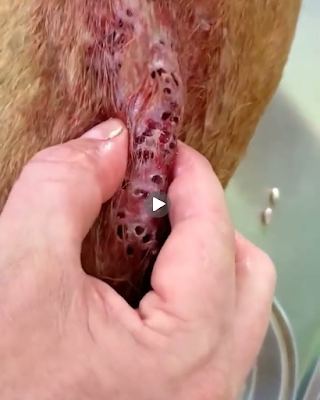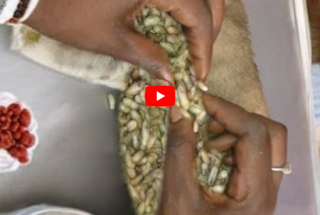Daily Dog Skincare Routine: How to Keep Your Pet’s Coat Healthy and Shiny
Just like humans, dogs need proper skincare to stay healthy and comfortable. A dog’s skin is their first line of defense against infections, parasites, and allergies. It also plays a huge role in keeping their coat shiny and soft. Whether your furry friend has long hair, short hair, or sensitive skin, developing a simple daily skincare routine can make a world of difference.
In this article, we’ll explore why dog skincare matters, what you can do every day, and how to keep your pet’s skin in top condition all year round.
Why Daily Skincare is Important for Dogs
Your dog’s skin reflects their overall health. Problems like itching, dryness, or excessive shedding can indicate poor hygiene, allergies, or nutritional issues. Regular skincare helps to:
- Prevent dryness, dandruff, and irritation
- Reduce shedding and keep the coat smooth
- Detect parasites like fleas or ticks early
- Maintain a healthy skin barrier
- Strengthen the bond between you and your pet
Taking just a few minutes each day to care for your dog’s skin can help prevent costly vet visits and keep your dog feeling their best.
1. Daily Brushing is Key
Brushing your dog’s coat every day is one of the easiest and most effective skincare habits.
- It removes dirt, loose fur, and dead skin cells.
- It helps spread natural oils evenly through the coat, keeping it soft and shiny.
- It also prevents matting, especially in long-haired breeds like Golden Retrievers or Shih Tzus.
🪮 Pro Tip:
Use a brush suitable for your dog’s coat type.
- Short-haired dogs: Use a rubber brush or bristle brush.
- Long-haired dogs: Use a slicker brush or pin brush.
- Curly or wavy coats: A comb or dematting tool helps prevent tangles.
A quick 5-minute brushing session can go a long way toward maintaining healthy skin.
2. Check the Skin While Brushing
While you’re brushing, take a moment to inspect your dog’s skin. Look for:
- Redness or dry patches
- Scabs or bumps
- Fleas, ticks, or flea dirt
- Excessive scratching
If you notice anything unusual, such as constant itching or hair loss, consult your veterinarian. Early detection can prevent bigger skin problems later.
3. Keep the Skin Clean (But Don’t Over-Bathe)
Bathing your dog too often can strip their skin of natural oils, leading to dryness and irritation. However, keeping your dog clean is still essential.
- Short-haired dogs: Bathe once every 3–4 weeks.
- Long-haired dogs: Every 2–3 weeks, or as needed.
- Active outdoor dogs: More frequent baths may be required.
🧴 Use a gentle dog shampoo — never use human shampoo, as it can disrupt your dog’s skin pH. Choose shampoos with natural ingredients like oatmeal, aloe vera, or coconut oil for soothing and hydration.
After bathing, dry your dog thoroughly with a towel and, if needed, a pet-safe blow dryer on a low heat setting. Damp skin can lead to fungal infections, especially in dogs with thick coats.
4. Moisturize and Condition
If your dog’s skin feels dry, consider using a leave-in conditioner or dog-safe moisturizer after bathing. You can also try natural oils like:
- Coconut oil: Great for hydration and soothing itchy skin
- Olive oil: Adds shine and softness
- Fish oil supplements: Promote healthy skin from the inside out
Always check with your vet before applying any product directly to your dog’s skin — especially if they have sensitive or allergy-prone skin.
5. Keep the Paws and Nose Moisturized
A dog’s nose and paw pads can become dry or cracked due to heat, cold, or walking on rough surfaces.
- Apply a paw balm or pet-safe moisturizer daily to keep them soft and protected.
- After walks, wipe your dog’s paws with a damp cloth to remove dirt and salt (especially during winter).
Regular paw care prevents discomfort and infections.
6. Maintain a Balanced Diet
Healthy skin starts from within. Make sure your dog’s diet includes:
- Omega-3 and Omega-6 fatty acids (found in salmon oil and flaxseed)
- High-quality protein for coat growth
- Vitamins A, E, and B-complex for healthy skin cells
You can also ask your vet about supplements for skin and coat health. A nutritious diet keeps your dog’s skin hydrated, smooth, and free from flakes.
7. Hydration Matters
Just like humans, dogs need plenty of water to maintain skin elasticity.
Always provide fresh, clean water throughout the day. Proper hydration helps prevent dry, itchy skin and supports overall health.
8. Protect Against Fleas and Ticks
Parasites are one of the most common causes of skin irritation in dogs. Use vet-approved flea and tick preventatives year-round.
Regularly check your dog’s coat — especially around the neck, ears, and belly — to ensure there are no hidden pests.
9. Keep Their Environment Clean
Your dog’s bedding, collars, and toys can trap bacteria and allergens.
- Wash bedding weekly with mild detergent.
- Clean grooming tools and food bowls regularly.
- Vacuum your home often to reduce pet dander and dust.
A clean environment supports healthy skin and reduces irritation.
10. Visit the Vet for Skin Checkups
Even with the best daily care, some skin problems require professional attention. If your dog has persistent itching, hot spots, or flaky skin, schedule a vet visit. Your vet can identify allergies, infections, or underlying conditions that need treatment.
Final Thoughts
Caring for your dog’s skin every day doesn’t have to be complicated. With simple habits like daily brushing, regular cleaning, and a balanced diet, you can help your furry friend maintain healthy, glowing skin. Consistency is key — just a few minutes of care each day can prevent irritation, shedding, and discomfort, keeping your dog happy, clean, and confident.
A healthy coat is a sign of a healthy dog — and your pet deserves to look and feel their best every day!



